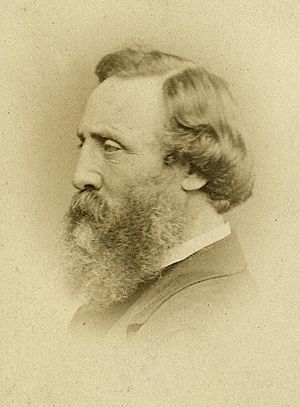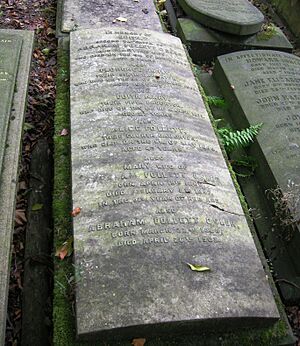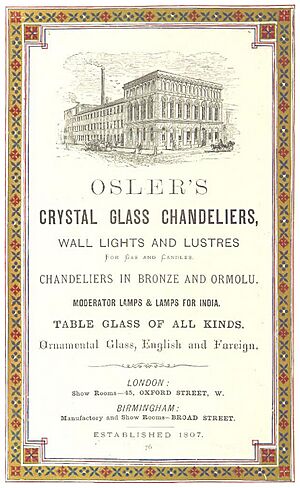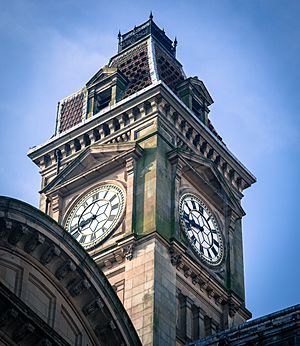A. Follett Osler facts for kids
Quick facts for kids
Abraham Follett Osler
|
|
|---|---|
 |
|
| Born | 22 March 1808 London, England
|
| Died | 26 April 1903 (aged 95) |
| Occupation | Meteorologist |
| Title | Senior Researcher |
Abraham Follett Osler (born March 22, 1808 – died April 26, 1903) was an important scientist from Birmingham, England. He was a pioneer in measuring weather data and keeping track of time very accurately. People often called him A. Follett Osler.
Contents
Early Life and Education
Abraham Follett Osler went to Hazelwood School in Birmingham from 1816 to 1824. This school was on Hagley Road. In 1831, he became the manager of his father's glass manufacturing company. This company was located on Broad Street. Osler was very generous. He gave a lot of money and equipment to local scientific groups. These groups included the Birmingham Philosophical Institution (BPI) and the Birmingham and Midland Institute (BMI).
Osler's Scientific Work
Osler was a member of the Birmingham Philosophical Institution (BPI). He later joined its replacement, the Birmingham and Midland Institute (BMI). He was very active in these groups.
Inventing Weather Tools
In 1835, Osler created the first self-recording weather tools. These included an anemometer and a rain-gauge. He installed them at the BPI's building in Cannon Street, Birmingham.
- Anemometer: This device measured wind pressure. It had a plate that moved with the wind. A pencil then recorded the wind's strength and direction on a moving piece of paper.
- Rain-gauge: This tool collected rainwater. It measured how much rain fell. When the container was full, it would empty itself and start recording again.
These inventions were very helpful. They allowed scientists to collect continuous weather data. Similar devices were later set up in other places, including the famous Greenwich Observatory. Osler used the information gathered to better understand winds and weather patterns.
Improving Public Timekeeping
Osler also worked on making time more accurate for everyone.
- Public Clock: In 1842, he set up a public clock outside the Philosophical Institution. This clock showed the correct local time based on astronomical measurements. Church clocks in the area were set using this accurate time.
- Synchronizing Time: Later, this clock was connected to Greenwich Mean Time (GMT) using the electrical telegraph. This was important for railway schedules. Many other clocks around Birmingham were also linked by wire to this main clock.
- Big Brum: In 1883, Osler gave a clock and bells for the tower of the new Art Gallery. This tower was built in 1885. This clock became known as "Big Brum". It became the main timepiece for the town. It replaced the older, expensive network of wired clocks.
Contributions to Exhibitions
Osler also designed beautiful glass creations.
- He created the Crystal Fountain. This was the main attraction at the Great Exhibition of 1851.
- In 1854, he made a large, two-tier candelabrum. It was 20 feet tall! This was for the Exhibition of Industrial Arts and Manufacturers.
In 1855, Abraham Follett Osler was chosen to be a Fellow of the Royal Society. This is a very high honor for scientists.
Later Life and Legacy
Abraham Follett Osler passed away on April 26, 1903, at the age of 95. He was buried in Key Hill Cemetery in Hockley. He had married Mary Clark in 1832. They had eight children, but only three lived longer than him.

His son, Henry Follett Osler, continued his father's work in meteorology at the BMI. Henry also gave money for the BMI to use Perrott's Folly. This is a 100-foot tall monument in Edgbaston. It was used as an observatory. Osler Street and Osler Street School in Ladywood were named in his honor.
See Also
- Birmingham and Midland Institute – meteorological measurements



